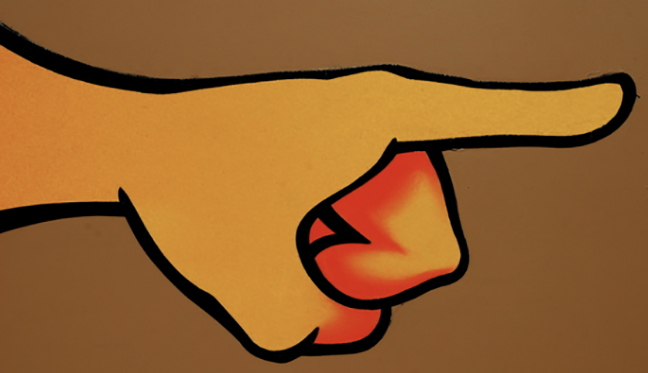 Think of all the ways that dogs live as part of our lives. Our first thought might be the various dogs we have had as pets, or the dogs that family and friends have had with whom we have interacted. Then there are working dogs. These can be guard dogs, farm dogs who herd livestock or keep foxes away from the chicken coop at night, service dogs helping all manner of physically and otherwise-challenged individuals live their daily lives, sometimes enabling these people to live independently where they otherwise would not be able to. Therapy dogs are not considered service dogs. They usually are pets who have a special disposition, lots of obedience training, and who have a special way of bonding with people. They work in hospitals, hospice, nursing homes, schools, universities, dental offices, and private psychotherapy practices where they bring smiles, love, and healing to people. The exact mechanism of their healing abilities is not precisely known, but there is much evidence that it exists.
Think of all the ways that dogs live as part of our lives. Our first thought might be the various dogs we have had as pets, or the dogs that family and friends have had with whom we have interacted. Then there are working dogs. These can be guard dogs, farm dogs who herd livestock or keep foxes away from the chicken coop at night, service dogs helping all manner of physically and otherwise-challenged individuals live their daily lives, sometimes enabling these people to live independently where they otherwise would not be able to. Therapy dogs are not considered service dogs. They usually are pets who have a special disposition, lots of obedience training, and who have a special way of bonding with people. They work in hospitals, hospice, nursing homes, schools, universities, dental offices, and private psychotherapy practices where they bring smiles, love, and healing to people. The exact mechanism of their healing abilities is not precisely known, but there is much evidence that it exists.
Animal Assisted Therapy has been around for many years. In ancient Egypt, dogs were used as healing agents. It was believed that a dog’s saliva could cure disease and heal sores and lesions. This was true for the Greeks as well where most of their healing temples had dogs, which were trained to lick wounds. Animals assisting in psychological healing are documented as far back as the 1600’s where John Locke suggested that small pets could help with the social learning of children. Boris Levinson, the founder of pet-facilitated therapy, believed that man had lost touch with his inner or natural self. As such, he was alienated from this inner nature because he refused to face his irrational identity as personified by animals. Animal assisted therapy could help him regain that connection. Levinson wrote a landmark paper titled “The Dog as Cotherapist” in 1962. After considerable research, he demonstrated that pets could be very effective in the treatment of emotionally disturbed children. He believed a companion animal that displayed unconditional acceptance made the treatment setting a more secure environment for young patients. This, in turn, seemed to assist patients in their ability to express themselves. Levinson became a leader in developing the inclusion of animals in the therapeutic setting into an adjunct form of therapy. Sigmund Freud believed that dogs had a special sense that allowed them to judge a person’s character correctly. After his death, it came to light that he often had his dog sit in on his psychotherapy sessions with patients and that he noticed that it helped their individual psychological analysis.
As any good therapist will say, at the very heart of the therapeutic relationship are three things: empathy, genuineness, and unconditional positive regard. Therapists use many different modalities in their work. Cognitive behavioural therapy, psychodynamic therapy, and depth psychotherapy are but a few among dozens of different approaches. However, where the true healing occurs is in the relationship between therapist and patient—in the patient feeling that they are accepted (unconditional positive regard), understood (empathy), and are able to trust the therapist (genuineness).
Those three tenets—genuineness, unconditional positive regard, and empathy—are naturally present in animal assisted psychotherapy. A dog, for example, is nothing but genuine. He or she doesn’t wear a persona and one never has to wonder what his or her true feelings are. Anyone who has ever owned a dog or been around one for any length of time understands the concept of unconditional positive regard. No matter how long we are away from them, no matter how badly we mistreat them (short of physical abuse), a dog is always there to love us and look favorably upon us. In therapy, no matter what dark secret is spoken, or demon unleashed, the therapy dog will sit quietly, non-judging, with eyes that say it is all okay. The third tenet, empathy, is obviously not something that is verbally communicated between dog and patient yet is a felt sense. How many of us have had the experience of feeling sad, under the weather, or are upset, and somehow our ‘animal’ feels it and indicates in some way that he or she understands? Martin Buber in his book, I and Thou said, “ An animal’s eyes have the power to speak a great language.” Just as the human therapist is therapeutic using genuineness, unconditional positive regard, and empathy, so is the canine or other animal therapist.
Our connection with nature can be very profound and have a great impact on us as individuals. Nature, which includes animals, has a wisdom to share with us and if we allow ourselves to become separate from that nature (even though we are innately part of it) we lose its teachings. There are many respected scholars in the field who suggest that most of our psychological and emotional distress and conflict as human beings in our culture is a result of losing touch with nature and the sense of connection to it. Carl Jung, the eminent Swiss psychologist, and considered one of the fathers of psychoanalysis, commented again and again on the importance of this connection and awareness in our efforts in simply being human. I believe that each of us has a natural ability to connect with nature in a deep and meaningful manner. It is in this connection that we then can encourage a greater connection with ourselves.
Given that a lost connection with nature and soul impacts our dis-ease, encouraging this connection should have a positive effect in psychotherapy. Having a dog in the therapy room who is actively engaged with the patient is one such way that this connection can be facilitated.
***
Cindy Hayen, MA, is a psychotherapist practicing in the Richmond Hill, Ontario area. She works with her two Golden Retrievers, Aspen and Romy, in therapy. Please visit her website at www.cindyhayen.com







This is a great article, Cindy! Thanks for sharing it with my readers! Best to you, and best to your therapy helpers Aspen and Romy!
Enjoyed this article, Cindy, I will share it. Dogs are great creatures.